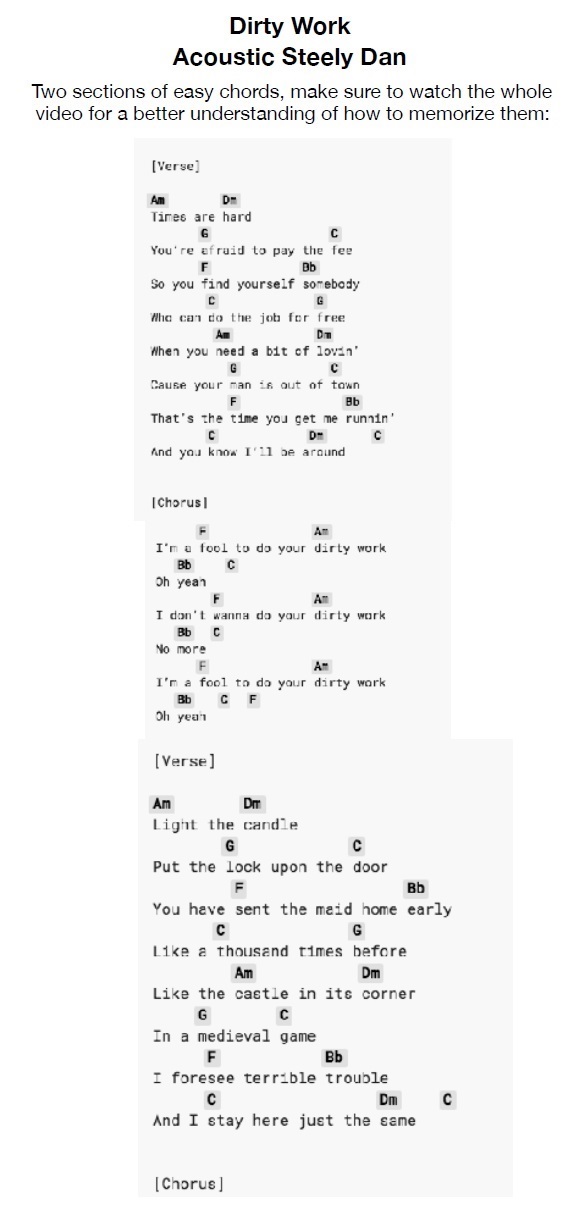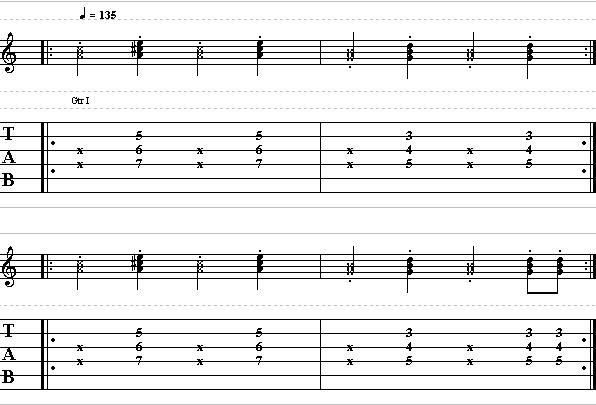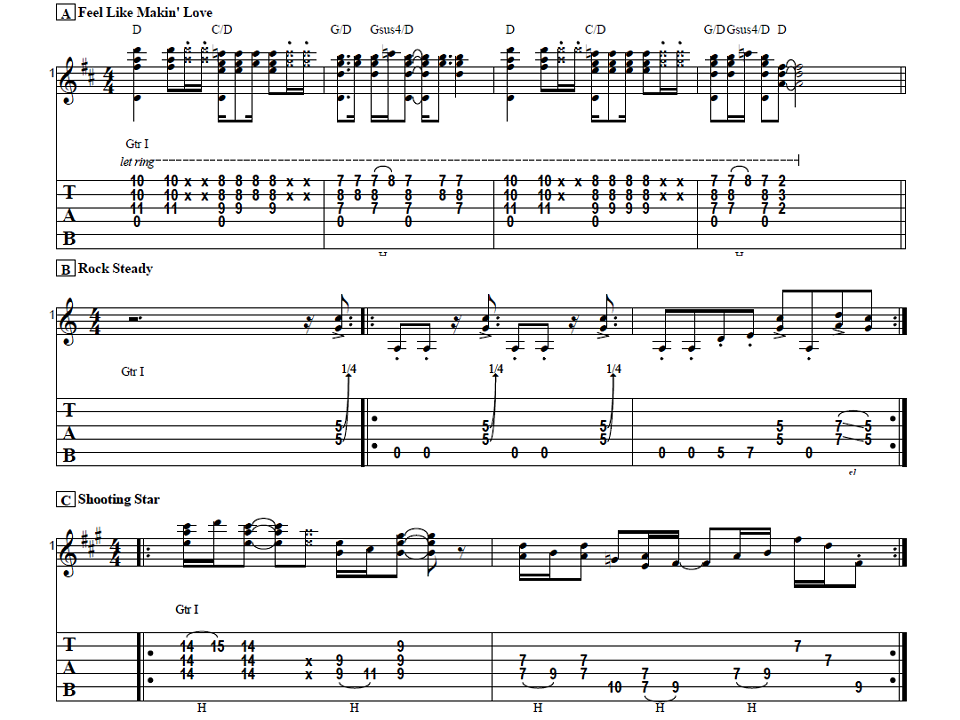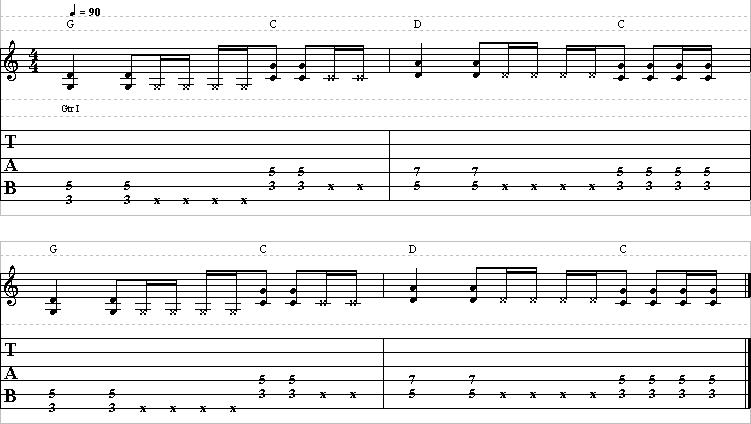Hey, how’s it going this is Sean Daniel with Guitar Control, today we’re learning my absolute favorite Steely Dan song an acoustic version of the song “Dirty Work”. A really awesome song, I think we’re going to do it in a different way than you’ve seen it before they kind of explains the fret board and songwriting a little bit.
[contentwall] [/contentwall]
[/contentwall]
Click on the Tabs button to follow the chords and tabs.
We have two main parts; the first part is going to be the verse chord progression. You’ll notice that I’m actually using a barre chords for a lot of these. Now even if you’re not down with barre chords we’re still going to talk about this and you can still play this whole thing but after we teach the beginning chord progression in open chords I want to go back to the barre chords because I think it might unlock a little bit of understanding about song writing in general.
I think the best way to do this is to pair these off into chord groupings right so if we just kind of think of these as four two chord progressions it’s really easy to remember. So we have A minor, to a D minor, to a G, to a C, to an F major to a B flat, to C, and back to G. It might seem like a longer chord progression relative to other things but really valuable. It’s just strumming, if we start on A minor the strumming of that is going to be like a 1, 2, 3, and 4 instead of down and ups like down, down, down, down.
I think it’s really good to count musically 1, 2, 3, 4, and you can dynamically play it a little bit so when I say dynamic it’s kind of splitting the chord into pieces. So regular A minor middle finger 2D, ring finger 2G, pointer finger 1B and then maybe I pick the bottom five strings the highest five strings I’m the one that downbeat I’m hitting the open A-string right on the two I’m hitting maybe just the D-string. If I don’t hit that, that’s fine you don’t have to be as precise we’re just kind of getting a cool vibe that goes along with the song.
After those first two hits A-string, D-string I’m getting the higher part of the chord and I’m going down on the three count and then down again on the four count and then up on the end of 4, 1, 2, 3, 4, and that’s going to help you to stay in time if you think about it more like instead of down, down, down, down, 1, 2, 3, 4. That’s just 1 bar of 4 count on A minor then we’re going to switch to D minor middle finger to G pinky or ring finger 3b, pointer finger one on the high E-string same thing 1, 2, 3, 4.
I’m aiming for the D-string on the 1 count; just the G-string on the 2 count 3 hit the whole chord 4 hit together and then in the end of 4, goes straight up 1, 2, 3, 4, and D. Now the great thing about doing it this way with open chords specifically in this key of C is how we’re looking at some chords that would borrow from other keys but all in open strings are going to help us out, so we can actually leave that A minor on the end before to get to the D minor as something that you might want to start trying a lot of times because if you’re waiting for your fretting hand to get to the next chord it’ll sound like this 1, 2, 3, 4, in 1, 2, 3, 4, in and then it’s kind of choppy.
It’s kind of cool to hit those open string sets every now and then it’ll sound fine 1, 2, 3, so our 1st chord pairing is a minor to D minor, our 2nd one is going to be G to C middle finger 3rd fret on the E-string pointer finger 2nd fret on the A-string, ring finger 3rd fret on the high E-string. You can do really any kind of G major chord you want it’s the same thing strike the root note on the one, on the two, at the A-string three, four, and the rest of the chord and then switch it to C. Again C major ring finger 3A, middle finger 2D open G pointer finger 1B open E, at this point I kind of like doing a little bit of a difference strum so in context A minor B minor since it’s kind of like that 4th of a 4 chord thing usually kind of like the back end of these usually symmetrical groups of 2 or 4 you might want to do a little bit something different strumming wise you don’t have to, totally optional this is just the way I play it’s kind of adding a little more going on so G 1 and 2, 3, 4, I’m not really hitting the root note as much, I’m just kind of going down up on the one, and two, three, four. now I think it has a nice little action, something different on that 4th chord of a 4 chord progression or two groupings of T right A minor, D minor, G major and then we’re going to go to an F major chord instead of making a barre club just to make it easy on ourselves and just do this ring finger 3rd fret A-string pinky 3rd fret of the D-string middle finger, your 2nd fret of the G-string on your finger, 1st fret on the B-string to B flat.
B flat can be a kind of a difficult one if you’re not totally down with barre chords specifically if you want to root it on the 1st fret of the A-string like this it’s kind of like a double barre chord you might have an easier time playing a B flat with the F major shape but just rooted on the 6th fret.
If you don’t do that double barre chord you can go from this F major chord is totally fine. Some people would even prefer the sound of that slide in there any kind of a sharp B flat major chord totally works right. For the purpose of this I’m just going to stick with this one on the A-string you can even just play like an A major one fret higher never be deterred by backwards because there’s always a different way that you can do it that’ll is suitable for your skill level even if it’s just a single note which we’re going to get to you in a 2nd but after that we’re going to go back to C major to C.
In recap we have A minor, D minor, G, C half B flat, C, G, just a real quick bear with me I want to talk about just the root notes and how they’re moving along it’s going to be a much easier way to remember this progression. Instead of playing an open A minor let’s play a single A note on the 5th fret of the low E- string, this is going to be our 1st note in the progression we’re going to go down A-string A to D like a representative of A minor, G, D minor, then we’re going to go from G to C.
So if starting on a fret going down A-string back two frets start again go down the string back to frets again down A-string so really it’s a super easy song remember conceptually especially when you see them as root notes D to A, or A, D, G to C, half to B flat and then bring it back home from C to G.
Now if you play these as barre chords like an A minor to D minor to G major to C major to F to B flat to C to G, for me that’s the easier way to organize the chords now even if you don’t play them that way I think it’s good to think conceptually because I’ve been there before and I play at these shows they play actually like tons of song so it’s always I need some way to kind of cheat how to remember things because you mean when you play like 80 songs in like a three-hour set or whatever it ends up being it’s hard to stay off of a sheet the entire time so this is just one kind of good short content and seeing these different corporations right now before we get to the chorus progression the last thing we have to do is just change that last chord instead of ending on a G major we’re going to add on an D minor and what that does it actually kind of presents a little bit of tension so here’s the example if we start with a minor this is the verse right to D G C and a half to B flat C back to G back to A, that leads nicely to run back to G to C half B flat, C, D minor then after this if we go to a different part of the song specifically a C major, D minor, to B flat. This is going to be the next part of the song really easy C to F, A minor B flat again we’re just kind of moving around a little bit through these different chords borrowing chords from different keys. Now there’s one thing I want to connect these pretty much same strumming after here from an D minor one, two, three, the happy beats are going to be the downbeat on the one and the three and then the four and it’s going to be down up one, two, three, or however you want to play it.
That’s going to be the space that you do, however if you want to make the arrangement we’re going to go to an F minor E flat and then the important part you’ll going to make walk this B flat to this C one, one, one, one, two, three, to A minor, back to that B flat if you want you can do a couple one, two, three, on this 1st fret of the A-string, I’m also going down, up, down, down, down, to get from that one B flat to B into A, C but you need to make that connection back to that 1st chord just like that right because that’s kind of an acoustic version of the song and again a steeply ground one of the great bands of all time as far as playing together and really just getting like a super tight amazing recorded sound is it just a representative of this on an acoustic guitar that kind of takes some of the cool things that they do as a unit right so again just two chord progressions as the entire song we’re leaving out the saxophone solo part unless you have a sax friend then you know come at me bro whatever it’s all good this is just going to be kind of an acoustic companion to the song if you know you’re playing with the singer for singing yourself in recap A minor, D minor to G to C, B flat, C B and we start again A minor D minor everything is the same so far G to C to F B flat is where changes just as C to F then G minor let’s see a minor B flat however you want to play that make sure you get it in there and again with the lyrics is three times and kind of like a fourth time.
I personally think they should have sing that part four times but again Who am I to judge the great Steely Dan anyways really cool song that is a fun one to play and it’s kind of a cool way to kind of just think about moving around the fret board a little bit try it out challenge yourself with the bar chords and you’ll be happy that you did.
Make sure to subscribe on our You Tube Channel and we’ll see you in our next video lessons, thanks for watching.
[ninja-popup ID=715]




